Invented by Tsuyoshi Ide, Dzung Phan, International Business Machines Corp
Anomaly detector models play a crucial role in identifying and predicting potential issues before they escalate into major problems. These models use advanced data analytics and machine learning algorithms to analyze various parameters and patterns in real-time data collected from industrial fleet assets. By continuously monitoring and analyzing this data, anomaly detectors can identify deviations from normal behavior and alert fleet managers to potential maintenance needs or impending failures.
The market for managing anomaly detector models for industrial fleets is driven by several factors. Firstly, the increasing adoption of Industrial Internet of Things (IIoT) technologies has led to a massive influx of data from sensors and connected devices embedded in fleet assets. This data provides valuable insights into the health and performance of these assets, but it also poses a challenge in terms of managing and analyzing such large volumes of data. Anomaly detector models offer a solution by automating the analysis process and providing actionable insights to fleet managers.
Secondly, the rising demand for predictive maintenance solutions is fueling the growth of this market. Traditional maintenance practices, such as scheduled maintenance or reactive repairs, are often inefficient and costly. Anomaly detector models enable predictive maintenance by identifying potential issues in real-time, allowing fleet managers to schedule maintenance activities proactively. This approach not only reduces downtime but also optimizes maintenance costs by avoiding unnecessary repairs.
Furthermore, the market for managing anomaly detector models is driven by the increasing focus on fleet optimization and efficiency. Industrial fleet operators are constantly looking for ways to improve asset utilization, reduce fuel consumption, and enhance overall operational efficiency. Anomaly detector models can help achieve these goals by identifying inefficiencies, such as excessive fuel consumption or suboptimal asset utilization, and providing recommendations for improvement.
The market for managing anomaly detector models for industrial fleets is highly competitive and diverse. Several technology providers and software companies offer specialized solutions tailored to the unique needs of different industries and fleet types. These solutions typically include features such as real-time monitoring, predictive analytics, automated alerts, and customizable dashboards for fleet managers to track and manage anomalies effectively.
In conclusion, the market for managing anomaly detector models for industrial fleets is experiencing significant growth due to the increasing demand for proactive maintenance, predictive analytics, and fleet optimization. As industrial fleet operators strive to improve operational efficiency and minimize downtime, anomaly detector models provide a valuable tool for identifying and addressing potential issues before they impact productivity. With the continued advancements in data analytics and machine learning, the market for managing anomaly detector models is expected to expand further, offering enhanced capabilities and benefits to industrial fleet operators.
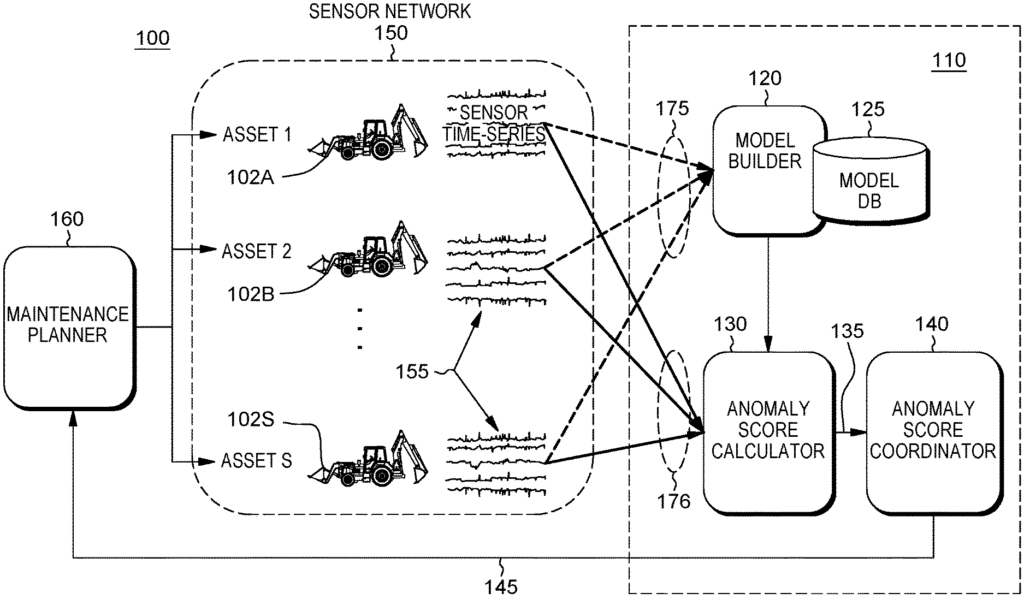
The International Business Machines Corp invention works as follows
A system and method to maintain the health of a fleet by implementing a framework for asset maintenance for collective anomaly identification that allows for more accurate maintenance planning for the fleet, or assets which can be prioritized. The methods are based on a Bayesian Multi-Task Multi-Modal Sparse Mixture of sparse Gaussian Graphic Models (MTL-MM-GGM) and combine (1) Laplace Prior-based sparse Structure Learning with (2) an 0-based sparse mix weight selection approach. Dual sparsity over variable-variable dependence and mixture components is guaranteed to efficiently learn the multi-modal distributions observed in different applications. The fleet-level CbM is represented by a model that combines two components: S sets of sparse weights for the individual assets of the fleet, and one set of GGMs shared across all S assets.
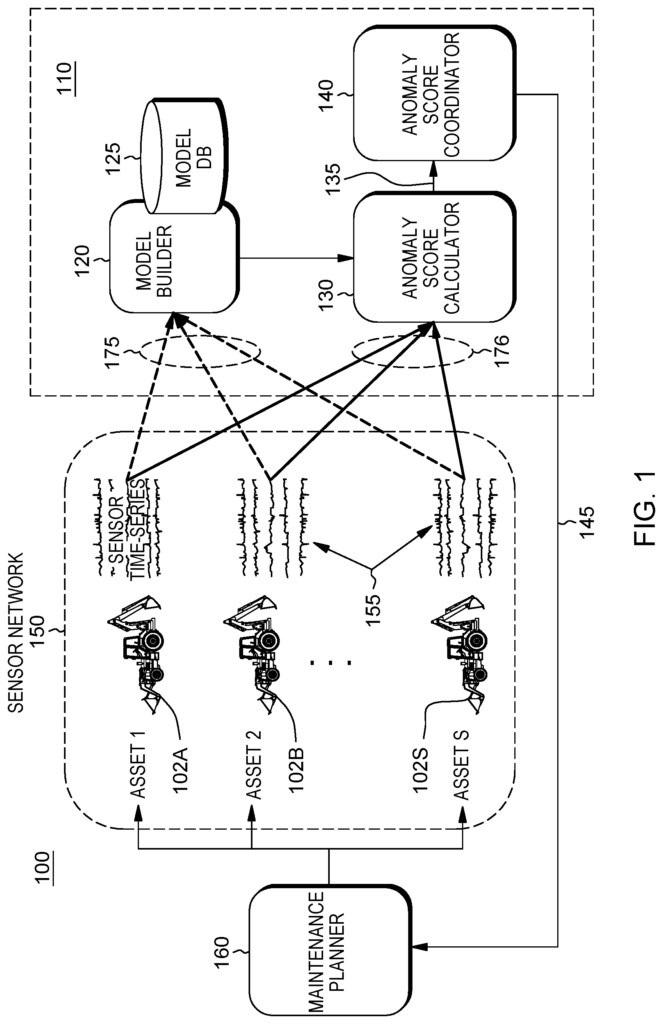
Background for Managing anomaly detector models for industrial fleets
Field
The present disclosure is a general method and system to monitor the health of an industrial fleet and to provide maintenance to industrial equipment.
Description of Related Art
Many industries are interested in maintaining good operating conditions for industrial equipment. Even experienced engineers can find it difficult to detect indications of system failures in noisy sensor data. However, statistical machine-learning has the potential to capture major patterns of normal operation conditions for condition based monitoring (CbM).
In a typical scenario, sensor data is used to calculate anomaly scores. These are numerical values that represent the degree of abnormality of the operational state. Administrators can then take action to reduce the risk, e.g. service interruptions.
A ?healthcare? “A?healthcare?
The monitoring system can monitor assets that may be similar, but not identical. This is because they might operate under different baseline conditions. The system and methods allow for a comprehensive monitoring which leverages the similarity of these assets while also paying attention to their individuality.
The systems and methods are designed to facilitate multi-task learning Gaussian graphic models (GGMs).
The systems and methods implement further techniques for multi-modality handling and create a practical framework of collective CbM.
The method includes: receiving, using one or more hardware processors, multivariate time-series data from plural sensors associated with each asset of a fleet; the data representing multiple operational states associated with similar assets at a present time window; determining, using one or more the hardware processors current parameter values of a learned mixture model based on received present time window data. The mixture model captures both a dependency structure between similar assets in the fleet and data representing an individual asset’s weight signature for a particular mixture model. The method includes: receiving, with the help of one or multiple hardware processors multivariate data from plural sensors that are associated with assets in a fleet, data that represents the operational states of each asset at a current time window, determining with the aid of one or several hardware processors the current parameter values for a mixture model, which captures both the dependency structure between the assets and the weight signature of an individual asset; computing with the assistance of one or two hardware processors an anomalous value based upon the determined parameter value; using
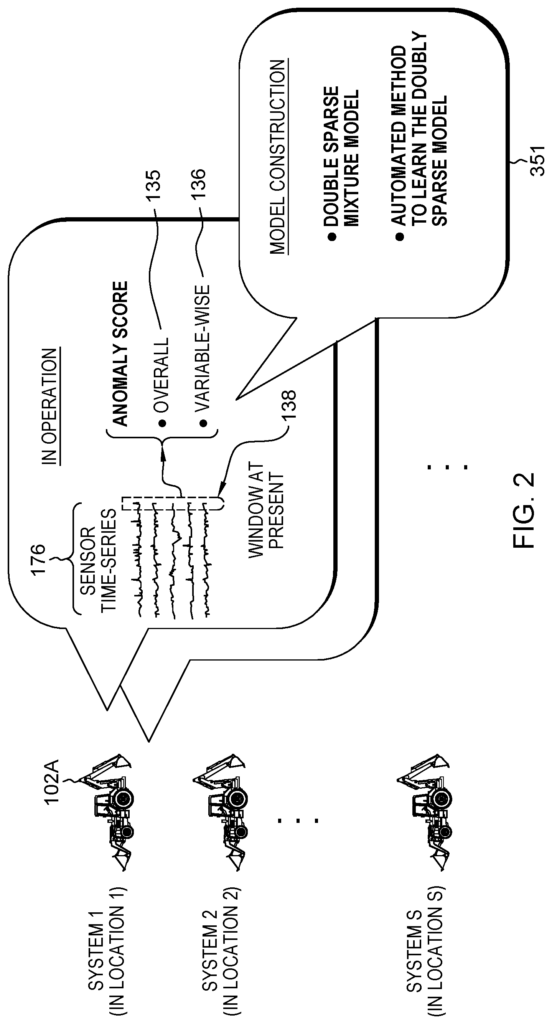
In a further embodiment of the invention, a system is disclosed for collectively monitoring assets. The system includes: a hardware process and a nontransitory computer readable memory coupled to it, wherein the memory contains instructions that, when executed by processor, cause processor to: receive multiple variables of time-series from plural sensors attached to each asset in a fleet, the data representing different operational states of similar assets during a current time window, determine current parameter values for a mixture model, capturing both the dependency structure between the similar assets and data representing the individual asset’s weight signature of a mixture model; compute
In another aspect, a computer-programmed product is provided for performing operations. The computer program includes a storage media readable by a processor circuit, and instructions that are run by the circuit to execute a method. The method is exactly the same as above.
There has been disclosed a ‘healthcare’? Monitoring system and method for providing care and collective maintenance of a fleet for an entity (e.g. a manufacturer or fleet owner) The monitoring system can be configured to monitor many assets including those that are similar, but not identical. The system allows for a comprehensive monitoring which takes into account the similarities of the assets, while also paying attention to their individuality. This will allow for an accurate maintenance solution for a fleet of assets or assets.
The system and methods described herein can be used to assist a company that has hundreds of similar tools under its control. “In one aspect, the system and methods herein assist an entity that manages under its control hundreds of similar types of tools or “assets”? under different operating conditions. “The systems and methods described herein provide maintenance services across all assets on an integrated CbM Platform all over the globe.
The system and methods described here assist an entity in building a fault-detection model for thousands vehicles, such as those located in certain locations. The systems and methods are used to combine data from different vehicles in order to gain some common insights. The models are tailored to each vehicle, however, because driving conditions vary greatly between drivers.
In one embodiment, the systems and methods can provide a solution to anomaly detection in a fleet that is collectively monitored. The assets are able to capture different operational states and manage many assets similar, but different. They also provide insight into the internal relationships of the variables captured.
The systems and methods implement techniques to multi-task learn Gaussian graphic models (GGMs). GGMs can be used in anomaly detection, as they are robust and interpretable.
There are currently three methods for learning GGMs when performing multiple tasks: group-lasso (G. Varoquaux A. Gramfort J.-B. Poline and B. Thirion. “Brain Covariance Selection: Better Individual Functional Connectivity Models Using Population Prior,?” Advances in Neural Information Processing Systems 2010, pp. 2334-2342. J. Honorio & D. Samaras: “Multi-task learning for Gaussian graphical Models” In Proceedings of the 27th International Conference on Machine Learning 2010, pp. Inferring multiple graphical structure, J. Chiquet Y. Grandvalet and C. Ambroise. Statistics and Computing vol. 21, no. 4, pp. 537-553 (2011), fused-lasso based (P. Danaher P. Wang and D. M. Witten?The joint graphical lasso to estimate inverse covariance across multiple classes? Journal of the Royal Statistical Society Series B (Statistical Methodology), Vol. 76, no. 2, pp. 373-397; C. Gao Y. Zhu X. Shen W. Pan et. al., ‘Estimation multiple networks in gaussian mix models? Electronic Journal of Statistics vol. 10, no. 1, pp. 1133-1154 (2016)) and Bayesian methods. (C. Peterson and F. C. Stingo and M. Vannucci. “Bayesian Inference of Multiple Gaussian Graphical Models,? Journal of the American Statistical Association vol. 110, no. 509, pp. 159-174, 2015). These studies, however, are focused on learning a common graph for all tasks. They cannot handle the multi-modal nature of the real world.
The systems and methods provide techniques to handle multi-modalities, and a framework for CbM collectively.
In one embodiment, all S tasks (or system) can share the K sparse GGMs to create a “pattern dictionary”. The mixture weights of those K patterns represent the individuality of each task. In one embodiment, mixture weights and K GGMs can be learned using data that is based on Bayesian formula.
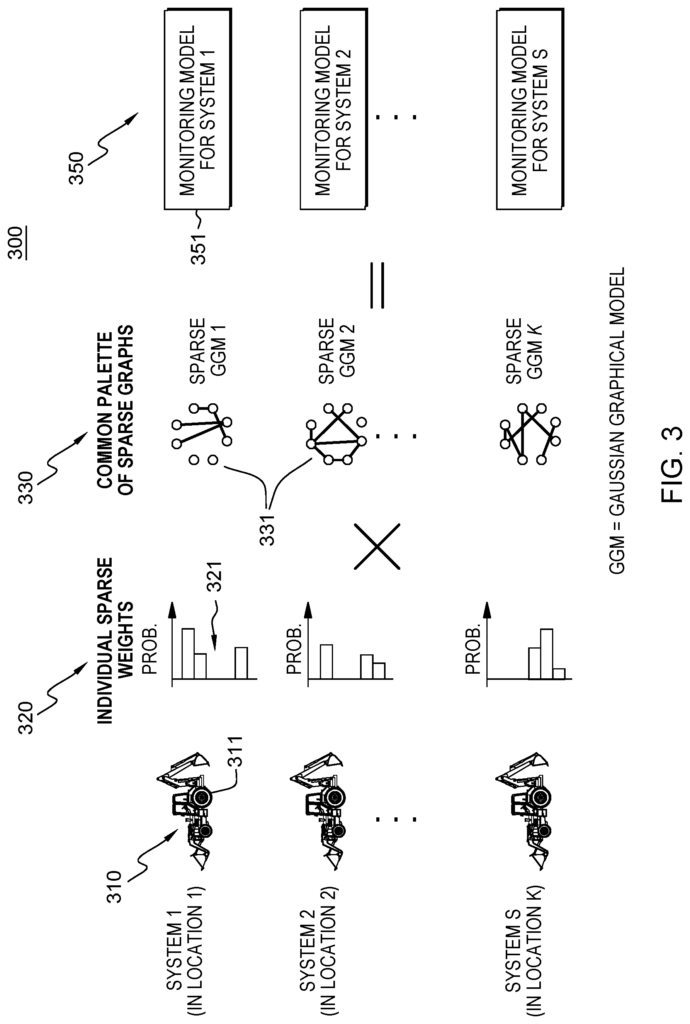
The systems and methods include building a multitask multi-modal GGM-learning model, including computer-implemented techniques for deriving variational Bayes algorithms with a guaranteed sparsity both in variable relationship and mixtures. In order to derive a variational Bayes formula for mixture weight, methods are implemented that implement an -regularized formultion. These techniques can be used as a solution for anomaly detection in a CbM framework that is practical and applicable to a fleet of assets.
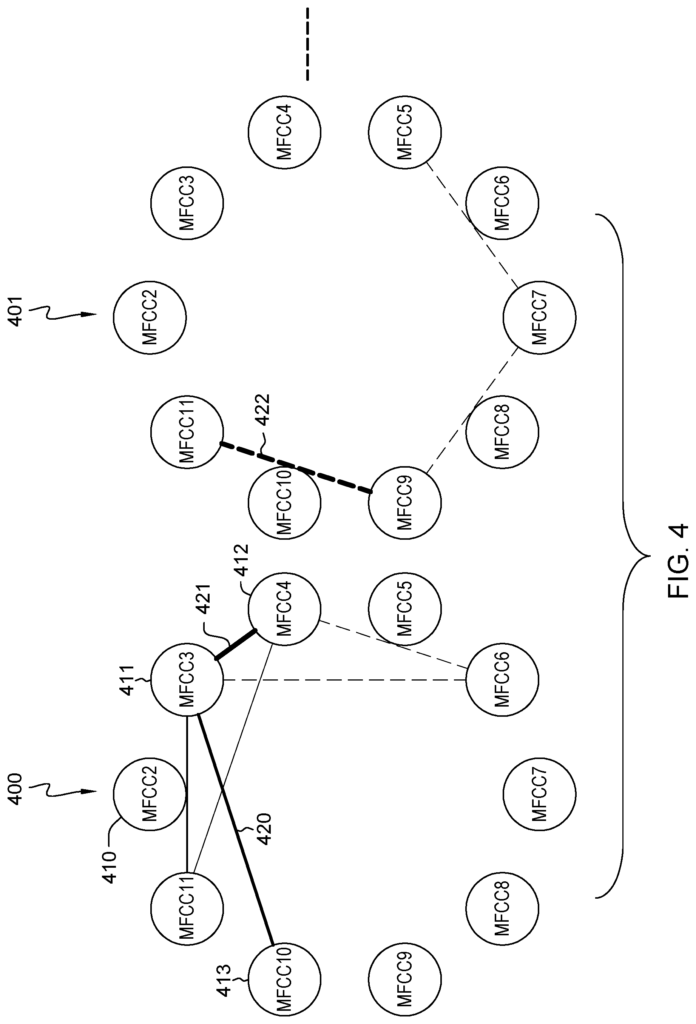
Click here to view the patent on Google Patents.
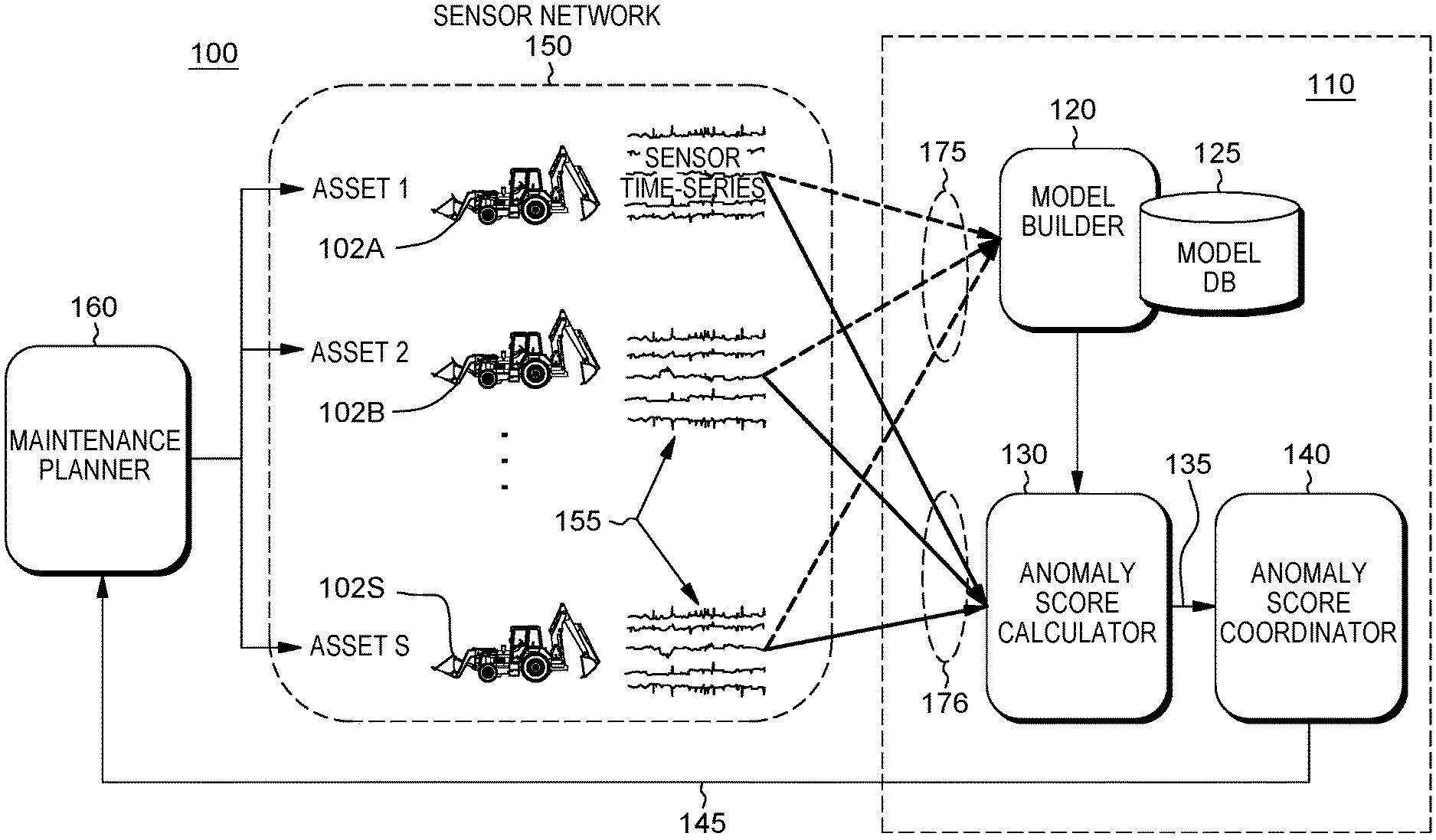
Leave a Reply